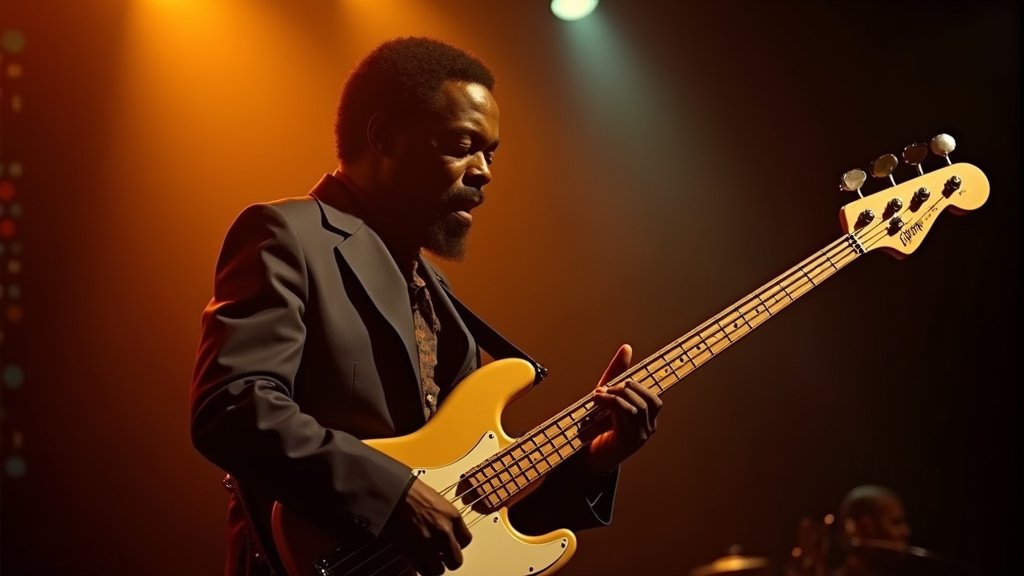The annals of jazz and funk bass guitar are rich with innovators, but few figures loom as large or leave as indelible a mark as Paul Jackson. Revered for his groundbreaking work with the legendary Herbie Hancock, Jackson’s distinctive approach to the bass not only anchored some of music’s most iconic recordings but also pushed the sonic boundaries of the instrument itself. This exploration delves into the life and artistry of Jackson, examining the profound influences that shaped his unique sound, his collaborative spirit, and his lasting legacy in the world of music.
The Genesis of a Groove: Pentecostal Faith and Musical Foundation
Jackson’s musical journey is deeply intertwined with his spiritual upbringing. A significant influence on his playing style and rhythmic sensibility was the vibrant and often complex music of the Pentecostal Church. The fervent energy, call-and-response patterns, and ecstatic rhythms characteristic of Pentecostal worship provided a fertile ground for a young musician like Jackson to absorb and internalize a deeply spiritual and percussive approach to music. This foundational experience would later manifest in his ability to create basslines that were not merely supportive but were in themselves compelling rhythmic statements, imbued with a soulful urgency.
Collaboration and Innovation with Herbie Hancock
It was in his collaboration with keyboard maestro Herbie Hancock that Paul Jackson’s genius truly came to the forefront. As a cornerstone of Hancock’s groundbreaking Headhunters band, Jackson’s basslines became synonymous with the fusion of jazz, funk, and R&B. His playing was characterized by an unshakeable groove, melodic ingenuity, and a willingness to explore unconventional sounds. He developed a potent musical dialogue with drummer Mike Clark, a partnership that became a driving force behind the band’s innovative sound. Their interplay was a masterclass in rhythmic synergy, where the bass and drums were not just a rhythm section but a cohesive, breathing entity.
Beyond Headhunters: A Versatile Artist
While his work with Hancock remains a pinnacle achievement, Jackson’s career extended far beyond this celebrated period. His distinctive talent also led him to contribute to a wide array of projects. In one notable instance, the burgeoning success of Santana created a wave of interest in larger ensembles, leading to a 17-member Latin jazz group being signed. Jackson’s involvement in such diverse musical settings showcased his adaptability and his deep understanding of various rhythmic traditions.
Deconstructing the Clave: A Rhythmic Scholar
One of Jackson’s more intricate contributions to the world of music theory and practice was his work in deconstructing the clave. The clave, a syncopated rhythmic pattern fundamental to Afro-Cuban music, is notoriously complex and often felt rather than explicitly articulated. Jackson’s analytical approach to understanding and dissecting the clave revealed a deep intellectual engagement with rhythm itself. This analytical prowess, combined with his innate groove, allowed him to articulate rhythmic concepts in a way that was both scholarly and accessible, further enriching the vocabulary of musicians interested in Latin and Afro-Caribbean music.
Paul Jackson’s legacy is that of a true master craftsman. His ability to blend spiritual depth with raw funk, his innovative rhythmic thinking, and his profound influence on generations of bassists solidify his position as one of the most important voices in contemporary music. Whether anchoring the groove for Herbie Hancock or dissecting the complexities of the clave, Paul Jackson’s contribution to the art of music remains immeasurable, a testament to a life dedicated to the deep, resonant power of the bass.


























